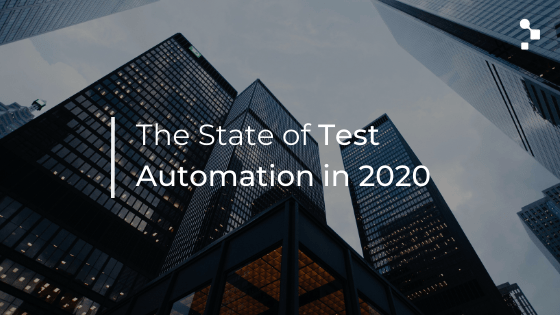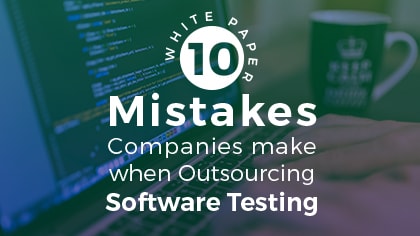Global digital transformation is crucial to support health and drive the economy, inclusive development, financial prosperity and connect the world. Digital technologies are changing the most diverse areas of people’s lives. Federico Toledo and Paz de Soto from Abstracta explain why software testing is so relevant in this context.
“A catastrophe can occur due to the failure of a system“, emphasized Abstracta’s Quality Enigeer Chief Operating Officer (COO) Federico Toledo. “Today almost everything is mediated by systems and that is why software quality is so important for the daily development of life itself. Testing is key in this path”.
Thus, Federico clearly and forcefully summarized the importance of software testing, but how does this relate to digital transformation? What is its concrete relevance for its development?
As a World Bank publication explains, “Digital technologies are at the forefront of development and provide countries with a unique opportunity to accelerate economic growth and connect citizens to services and jobs. In times of crisis, digital technologies keep people, governments and businesses connected. They can generate innovative solutions to complex development challenges…”.
In this context, continuous testing is an essential link for the proper functioning of systems and the successful development of digital transformation.
In order to understand the importance of software testing in the digital transformation, we talked with Federico Toledo and Paz de Soto, Customer Success Manager at Abstracta.
“As we all know, to err is human. Software development and technology adoption are no strangers to this truth,” Federico introduced. “Testing helps to manage the risks associated with digital transformation, involving in the process people with the necessary experience and qualities to think about what can go wrong, and act based on that before it is too late,” he detailed. And he stressed: “The more technology there is and the more complexity there is, the more and better testing will be necessary.”
In the same vein, Paz outlined: “We are living transcendental changes in multiple areas. It is essential to ensure that they are carried out correctly and sustainably. The development of the technology sector has been and continues to be exponential. So the complexity of the ‘problems’ to be solved increases every day. I believe that there can be no digital transformation without testing.”
How does the relevance of testing change in the era of “crypto things”, with the growing trend of decentralized systems and smart contracts?
Federico Toledo: We are entrusting more and more things to technology. However, the current hype around crypto things sometimes ends up making certain promises that are difficult for end consumers to test. I think it is more likely that a person with no knowledge in software development will get into an autonomous car and fully trust its algorithms than someone who knows everything that can go wrong.
As participants in this development, we have a responsibility to make the technology robust and reliable. So that people can use it without it negatively affecting their lives and achieve their intended goals.
What are the biggest myths about test automation?
Federico Toledo: The classic myth, which has been around since the first industrial revolution, is that automation can replace “manual” work. I think that today in the community of people who work in testing we already agree that this is a goal that does not make sense. We should not try to automate everything or replace manual testing with automated testing. The problem is that it is a promise that some vendors still make as a way to get attention and sell their product.
On the other hand, there are those who go to the other extreme and claim that automation does not bring value. This is something that has done a lot of damage to the software development community. I think we have to find the middle ground. It is necessary to use automation in our tests in an effective and efficient way. With the aim to enhance testing, and not to do it in an autonomous way only.
Paz de Soto: Historically, automation brings with it the assumption that automating is the best solution to all problems. Test automation is no exception. I believe that extremes are never good. Test automation is a great tool to support test strategy, but it is not applicable or recommended in all cases. I think one of the biggest myths it brings with it is that it works like a magic wand. I wish it was that simple, but it is not.
What are the new technological environments?
Federico Toledo: We have been working with a variety of devices that change from year to year. With the cloud first centralizing in servers and then distributing with micro services, presenting the same information and user experience in different channels. Augmented reality has been around for years but has been slow to become accessible, although it will become increasingly so. All these environments are no longer new, and we have already been working on them in one way or another.
Web 3.0 is considered a new technology wave that will bring new methods of defining applications and how we interact with them. In terms of technological environments, the biggest change has to do with how we work, which has become increasingly dispersed. Even in companies that are in the United States, there are few teams that are all in the same city. Therefore, this opens the door for new ways of collaborating that are asynchronous or distributed. While this brings many challenges, it may also allow us to be more diverse and fit our work around our lives rather than the other way around, as we have always had to do.
How do the new technological environments make software testing development more difficult?
Paz de Soto: I don’t know if I would call it hindering, but challenging. The digital transformation brings with it the need to develop a different skill set than what traditional education preaches. Before, someone studied a career and that knowledge continued to be valid for years and even decades. Today we are constantly confronted with new challenges and learning must be continuous.
New technological environments challenge us to keep innovating. They lead us to rethink processes, methodologies and strategies to constantly adapt them to new needs.
What are the new challenges of testing in the search for digital solutions?
Federico Toledo: Often testers with specific expertise in certain areas are sought after. However, for me, testing is testing. What do I mean by this? Every system is tested with the same mindset. What changes perhaps are some aspects related to the technology that can generate certain interesting cases to test. For example, now we may need to know more about mathematics to test AI-based systems, or about blockchain to test some web3. Anyway, that is learned, just like a developer or an analyst learns.
We can learn the particularities of the domains and do a good job. The important thing is always the mindset, how we focus on the challenges, how we visualize the possible problems, how we sniff out the risks. That is the real contribution of software testing to digital transformation. In a way, testing makes it possible, helping to know and work on risks, control costs and improve the quality of the final result.
Are you looking for the ideal partner for your company? Abstracta is one of the most trusted names in software quality engineering worldwide.
Contact us today to see how we can help your business!
Give Federico a follow on Linkedin and Twitter. He has a blog and a podcast, through which he shares valuable information and insights. And give Paz a follow on Linkedin and Twitter!
Follow us on Linkedin, Facebook, Twitter, and Instagram to be part of our community!
Tags In
Natalie Rodgers, Content Manager at Abstracta
Related Posts
Webinar Recap: The State of Test Automation 2020 – Testim Survey Results
COVID-19’s impact on test automation, today’s biggest hurdles, and looking ahead In June, our friends at Testim conducted a survey on end-to-end test automation. So, what were the results? Watch this webinar recording where our COO, Federico Toledo, joined Testim CEO Oren Rubin to uncover…
White Paper: 10 Mistakes Companies Make When Outsourcing Software Testing
Outsourcing Software Testing Do’s and Don’ts With software testing accounting for 35% of IT budgets in 2015 (according to the World Quality report 2015-2016), it’s clear that managers are looking to maximize their test spend, making the most of each dollar by testing as efficiently and…








